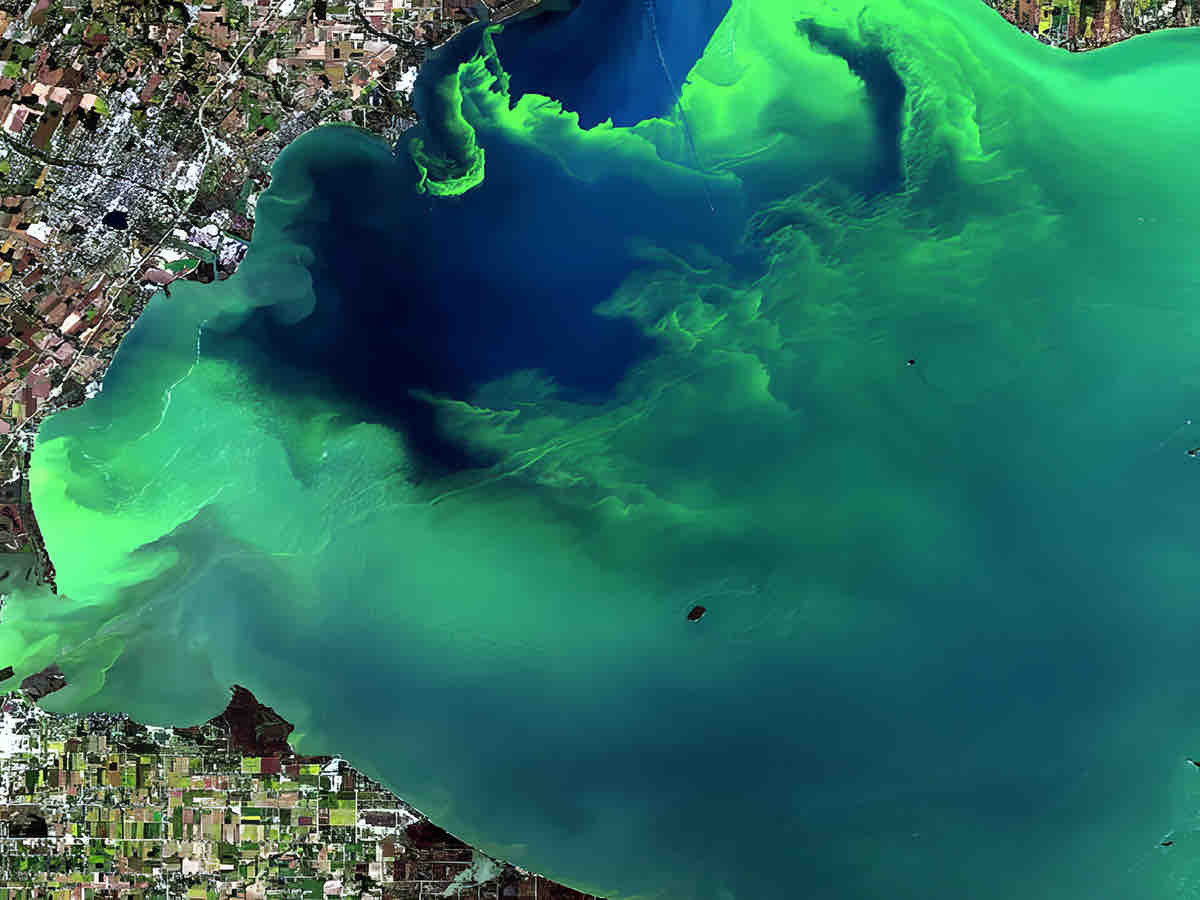Algae are not often discussed in national security circles. Indeed, as the base of the food web that supports all aquatic life, most forms of algae are not only beneficial but necessary for healthy marine and freshwater ecosystems. But a small subset, denoted as harmful algae, can adversely affect people and destabilize nations and, unfortunately, they are increasing as a worldwide ecological security threat.
Harmful algal blooms (HABs) occur when these organisms accumulate in large numbers. HABs can bring unwelcome and sometimes severe economic, social, and political consequences for humans and societies. Scientists report that HAB events are occurring more often, in more places globally, and lasting longer than in the past. A Nature article from this week argues that summertime algal bloom intensities are growing in intensity in freshwater lakes worldwide.
Although climate change fuels algal bloom growth by warming waters, the largest driver of HAB expansion is almost certainly the change in rate and chemical composition of municipal, industrial, and agricultural runoff that provide nutrients for algae. Excess quantities of nitrogen and phosphorus compounds are especially problematic.
Recent domestic outbreaks
After suffering a devastating 16-month onslaught of Karenia brevis, a form of red tide, that ended in February 2019, there are reports that it has returned to the Gulf coast. Locals are understandably concerned because the 2017-2019 red tide prompted Florida to declare a state of emergency after making locals and tourists ill from breathing aerosolized neurotoxin, while killing tens of thousands of fish, birds, and marine mammals, such as manatees and dolphins. The impacts on Florida tourism and fishing sectors were severe and became a political issue in the 2018 Florida Senate election.

Meanwhile, for many years cyanobacteria has plagued all of the Great Lakes, with Lake Erie being a particularly high profile example. At its greatest extent, this year’s Lake Erie HAB spanned over 600 square miles, prompting flashbacks of the severe 2014 crisis. Cool Autumn temperatures have made conditions for algal growth unfavorable for the remainder of the year and, as of October 10, monitoring has been discontinued until 2020.
Late summer brought disruptive HABs across the country, including Kansas, Louisiana, New Jersey, Texas, and Utah.
Neurotoxins and depleted oxygen
Harmful algal blooms (HABs) cause damage primarily through two mechanisms:
- Production of neurotoxins that impair most forms of marine life and can even propagate up the food web through bioaccumulation. No antidotes are known and some algal toxins are among the most potent toxins ever discovered.
- Acute biomass growth that severely depletes aquatic dissolved oxygen levels, often causing dead zones, or damages infrastructure, such as desalination plants.

Oversimplifying to an extent that would make a marine ecologist wince, HABs generally arise from three types of organisms. [Adding here that the catch-all term “algae” is informal and squishy and encompasses a large set of non-plant, non-animal microscopic organisms.]
- Dinoflagellates, including “red tide” (in marine environments, and can also be green, yellow, or brown depending on species)
- Cyanobacteria, also known as “blue-green algae” (primarily in freshwater environments, but can spread into marine systems)
- Diatoms (all aquatic environments)
Global implications
HABs affect many nations worldwide but few have the resources available to the United States, which itself struggles to contain the problem despite a rapidly increasing scientific understanding of the problem and potential solutions. The aforementioned Nature article cites annual losses of over $4 billion in the United States alone, primarily from harm to aquatic food production, recreation and tourism, and drinking-water supplies. Compared to the United States, developing nations will have little ability to contain the stresses wrought by harmful algae, especially in the context of other social, political, and economic pressures.
Effects on fisheries deserve special mention, particularly since pressures from demographics, overexploitation, and climate change are all on the rise. One of the most common consequences of HABs are fish kills, including fish grown in aquaculture. In Asia, where aquaculture has exploded in the past decade due to downward pressures on marine fisheries, damages to the aquaculture industry have been estimated in the tens of hundreds of millions of dollars. Of course these pressures transcend national boundaries and have ramifications for the global food supply.

HABs are likely to undermine livelihoods, jeopardize food security, and threaten human and animal health as they occur with increasing frequency and range. For fragile states, this could be another nudge towards political or social instability.
